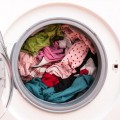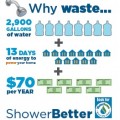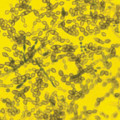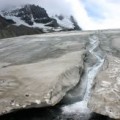NSU Newsroom
SharkBytes
Horizons
This version of NSU News has been archived as of February 28, 2019. To search through archived articles, visit nova.edu/search. To access the new version of NSU News, visit news.nova.edu.
This version of SharkBytes has been archived as of February 28, 2019. To search through archived articles, visit nova.edu/search. To access the new version of SharkBytes, visit sharkbytes.nova.edu.
Other NSU News Sources
News Releases Archive
Contact
Division of Public Relations and Marketing Communications
Nova Southeastern University
3301 College Avenue
Fort Lauderdale, Florida 33314-7796
SharkBytes Archives
SharkBytes Categories
- Academics
- Alvin Sherman Library
- Athletics
- Campaign Corner
- Community News
- Featured Center Stories
- News and Upcoming Events
- NSU Achievements
- NSU Alumni Spotlight
- NSU Art Museum Fort Lauderdale
- NSU Camps
- NSU Health Care Centers
- NSU Research Spotlight
- Nutrition Tips
- Looking Ahead
- Pride Bites
- Recreation and Wellness
- Regional Campuses
- Staying Green
- Student Affairs
- University School
Contact
Division of Public Relations and Marketing Communications
Nova Southeastern University
3301 College Avenue
Fort Lauderdale, Florida 33314-7796
Staying Green

Source: World Wildlife Fund Down the drain Did you know? If your toilet is from 1992 or earlier, you probably have an inefficient model that uses between 3.5 to 7 gallons per flush. Newer, high-efficiency toilets use less than 1.3 gallons per flush. Older showerheads can use 3 gallons per…
15 Ways to Protect the Environment
Source: Ohio Environmental Protection Agency 15 ways to protect the environment. Painting your house? Use a latex paint. Oil-based paints release hydrocarbon fumes. Get a tune-up. Properly maintained vehicles get better gas mileage and emit fewer pollutants. Don’t top off your gas tank. Overfilling causes spills that release hydrocarbons and…

Source: World Wide Fund for Nature Did you know? 80% of dry cleaners in the U.S. use perchloroethylene, a solvent that has been linked to cancer, nervous system damage and hormonal disruption. Seek out a non-toxic professional dry cleaning alternative or “green cleaner” in your area. If your washing machine…
7 Ways to Reduce Your Carbon Footprint
Source: World Wild Life Fund Want to save some dollars while conserving the environment? Even few simple changes around your home can reduce your carbon footprint. From opting for a shower instead of a bath to supplying your own reusable bags at the grocery store, you can prevent waste and…

Source: EPA.gov The average American family uses more than 300 gallons of water per day at home. Roughly 70 percent of this use occurs indoors. Nationally, outdoor water use accounts for 30 percent of household use yet can be much higher in drier parts of the country. It takes a…
Carbon Monoxide (CO) Poisoning Prevention

Source: Center for Disease Control When power outages occur after severe weather (such as winter storms, hurricanes or tornadoes), using alternative sources of power can cause carbon monoxide (CO) to build up in a home and poison the people and animals inside. Every year, at least 430 people die in…
Last Lazy Days of Summer – Protect Yourself and your Family
Source: US Environmental Protection Agency Summer Vacation may be almost over but there’s still time to protect yourself and your family on vacation or during a staycation. Hook, line and sinker: Check if there are any fish consumption advisories if you’ll be fishing. http://fishadvisoryonline.epa.gov Avoid getting bitten: Always follow label directions…
Hurricane Season is not over yet! Prepare for a Hurricane Now
Source: US Environmental Protection Agency Hurricane season began June 1 and will continue until November 30. Now is the time to make any preparations that can minimize injury and property damage. Households, utilities, and businesses should plan for disaster before hurricane season starts, or make any possible preparations when a…
Schools – The Impact on Children’s Performance and Health

Source: EPA There are many reasons why addressing the environmental health of schools is essential for protecting children’s health and improving their performance: A child’s developing organ systems are highly sensitive to environmental risk, and children are frequently more heavily exposed to toxic substances in the environment than are adults….
Source: National Geographic The water you drink today has likely been around in one form or another since dinosaurs roamed the Earth, hundreds of millions of years ago. While the amount of freshwater on the planet has remained fairly constant over time—continually recycled through the atmosphere and back into our…
Do you really need to use a Pesticide?

Source: EPA.GOV Like humans, pests need three critical elements to survive: food, water, and shelter. Before using pesticides, try these three simple steps to control or kill pests: STARVE THEM OUT! Pests will eat just about anything, but they might leave you alone if they don’t have easy access to food: Seal…
A Brief Guide to Mold, Moisture, and Your Home

Source: EPA.GOV Why is mold growing in my home? Molds are part of the natural environment. Outdoors, molds play a part in nature by breaking down dead organic matter such as fallen leaves and dead trees, but indoors, mold growth should be avoided. Molds reproduce by means of tiny spores;…
Tips for a Safe and Enjoyable Summer
Here are a list of 15 tips for the summer season released by the U.S. Environmental Protection Agency (EPA). Whether relaxing at home or off exploring the great outdoors there are many ways people can save money, cut energy costs and continue to protect the health of their families while…
Conserving Water at Home and in the Garden

Source: EPA Tips for home safety, avoiding potential risks, and preventing pollution by recycling and conserving water and energy. A family of four uses 400 gallons of water every day. EPA’s WaterSense program helps conserve water for future generations by providing information on products and programs that save water without…
Let’s Celebrate Earth Day all Month Long: Let’s Go Green Shopping
Source: EPA You can conserve resources, save energy, and prevent waste by buying products that: Are energy efficient Are used or reusable Are made with recycled content or are recyclable Have no packaging or reduced packaging Everything you buy affects the environment, but some choices are better than others. “Green…
Let’s Celebrate Earth Day all Month Long: Public Transit Use is Highest its Been in 57 Years

Source: Earth Day Public transit use is the highest it’s been in 57 years, according to a report by the American Public Transportation Association. In 2013, approximately 10.7 billion trips were taken by Americans on public transit – a 37.2% increase from 1995. The report also found that the number…
Let’s Celebrate Earth Day all Month Long – Climate Change is Already Affecting All Continents

Source: Earth Day According to a new a report by the Intergovernmental Panel on Climate Change (IPCC), climate change is already affected people throughout the world. “In recent decades, changes in climate have caused impacts on natural and human systems on all continents and across the oceans,” says the IPCC…
Let’s Celebrate Earth Day all Month Long
Source: Earth Day Recycle Your E-Waste Electronic waste, or “e-waste,” is a term used to describe any electronic device that is outdated, obsolete, broken, donated, discarded, or at the end of its useful life. This includes cell phones, computers, laptops, PDAs, monitors, televisions, printers, scanners, and any other electrical device. With…
Source: Center for Disease Control and Prevention The Risk is Real The risk of injury and death from home fires is real. Consider that: In 2011, fire departments across the country responded to 384,000 home fires. These fires claimed the lives of 2,640 people and injured another 13,350. Approximately 4…
Protect Yourself from Carbon Monoxide Poisoning

Source: www.cdc.com In many parts of the country, this winter has brought heavy snow and ice—even to areas where winter storms are usually uncommon. Next up is spring, which brings its own turbulence. When electrical outages occur during severe weather, many people use alternative sources of power for heating, cooling,…